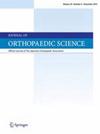Wrong-level spine surgery: A multicenter retrospective study
IF 1.5
4区 医学
Q3 ORTHOPEDICS
引用次数: 0
Abstract
Background
Wrong-level spine surgery is a rare but serious complication of spinal surgery that increases patient harm and legal risks. Although such surgeries have been reported by many spine surgeons, they have not been adequately investigated. Therefore, this study aimed to examine the causes and preventive measures for wrong-level spine surgeries.
Methods
This study analyzed cases of wrong-level spine surgeries from 10 medical centers. Factors such as age, sex, body mass index, preoperative diagnosis, surgical details, surgeon’s experience, anatomical variations, responses, and causes of the wrong-level spine surgeries were studied. The methods used by the surgeons to confirm the surgical level were also surveyed using a questionnaire for each surgical procedure and site.
Results
Eighteen cases (13 men and 5 women; mean age, 61.2 years; mean body mass index, 24.5 kg/m2) of wrong-level spine surgeries were evaluated in the study. Two cases involved emergency surgeries, three involved newly introduced procedures, and five showed anatomical variations. Wrong-level spine surgeries occurred more frequently in patients who underwent posterior thoracic surgery than in those who underwent other techniques (p < 0.01). Twenty-two spinal surgeons described the methods used to confirm the levels preoperatively and intraoperatively. In posterior thoracic laminectomies, half of the surgeons used preoperative markers to confirm the surgical level and did not perform intraoperative fluoroscopy. In posterior thoracic fusion, all surgeons confirmed the level using fluoroscopy preoperatively and intraoperatively.
Conclusions
Wrong-level spine surgeries occurred more frequently in posterior thoracic surgeries. The thoracic spine lacks the anatomical characteristics observed in the cervical and lumbar spine. The large drop in the spinous process can make it challenging for surgeons to determine the positional relationship between the spinous process and the vertebral body. Moreover, unfamiliarity with the technique and anatomical variations were also risk factors for wrong-level spine surgeries.
错误水平的脊柱手术:一项多中心回顾性研究。
背景:错误水平的脊柱手术是脊柱手术中一种罕见但严重的并发症,它增加了患者的伤害和法律风险。尽管许多脊柱外科医生都报道过这种手术,但它们并没有得到充分的调查。因此,本研究旨在探讨错误水平脊柱手术的原因及预防措施。方法:对10家医疗中心的脊柱错位手术病例进行分析。研究了年龄、性别、体重指数、术前诊断、手术细节、外科医生经验、解剖变异、反应和错误水平脊柱手术的原因等因素。对外科医生确定手术水平的方法也进行了调查,对每个手术过程和部位进行了问卷调查。结果:18例(男13例,女5例);平均年龄61.2岁;研究评估了错误水平脊柱手术的平均体重指数(24.5 kg/m2)。2例涉及紧急手术,3例涉及新引入的程序,5例显示解剖变异。错误水平的脊柱手术在后路胸外科患者中比在其他手术中更常见(p结论:错误水平的脊柱手术在后路胸外科中更常见。胸椎缺乏颈椎和腰椎的解剖特征。棘突的大落差使得外科医生很难确定棘突与椎体之间的位置关系。此外,对技术的不熟悉和解剖结构的变化也是错误水平脊柱手术的危险因素。
本文章由计算机程序翻译,如有差异,请以英文原文为准。
求助全文
约1分钟内获得全文
求助全文
来源期刊

Journal of Orthopaedic Science
医学-整形外科
CiteScore
3.00
自引率
0.00%
发文量
290
审稿时长
90 days
期刊介绍:
The Journal of Orthopaedic Science is the official peer-reviewed journal of the Japanese Orthopaedic Association. The journal publishes the latest researches and topical debates in all fields of clinical and experimental orthopaedics, including musculoskeletal medicine, sports medicine, locomotive syndrome, trauma, paediatrics, oncology and biomaterials, as well as basic researches.
 求助内容:
求助内容: 应助结果提醒方式:
应助结果提醒方式:


